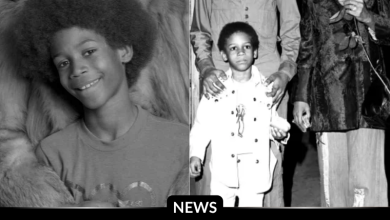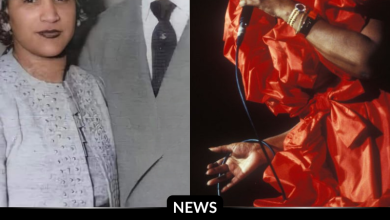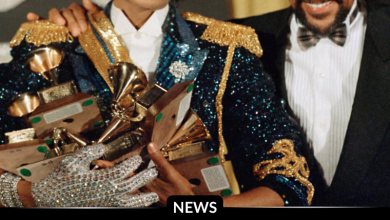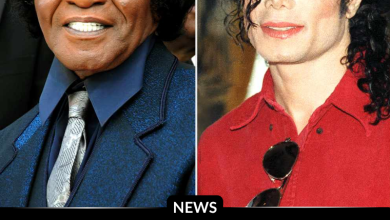“How Can You Dance Without a Bass?” — The Untold Story of How Prince’s Boldest Decision Almost Erased “When Doves Cry” from Purple Rain
OPINION: This article may contain commentary which reflects the author's opinion.
There are few songs that shook the foundations of pop music quite like Prince’s “When Doves Cry.” Released in 1984 as part of the Purple Rain soundtrack, it didn’t just top charts — it rewrote them. Yet behind the song’s genius lies a near miss: Prince almost cut it from the album entirely, all because of one unconventional — and controversial — creative choice.
“Wendy walked into the studio and said, ‘How can you dance without a bass?’” Prince recalled years later, laughing. “And she was right. Every rule said you needed that groove. But something in me said — leave it empty.”
That instinct — to break the rules even when they made no sense to break — became the heartbeat of “When Doves Cry.”
🎵 The Song That Broke Every Rule
At a time when funk and R&B revolved around bass-heavy grooves, Prince did something unthinkable: he removed the bass line entirely. The track — built on stark drum machine rhythms, haunting synths, and jagged guitar riffs — was unlike anything on the radio.
“I wanted it to sound like confusion,” Prince later explained. “Like a fight between love and fear. The missing bass made it feel off-balance — like heartbreak does.”
The result was a sonic landscape that felt raw, tense, and deeply emotional. The absence of bass made listeners lean in, filling the silence with their own anticipation.
🎸 The Moment of Doubt
It was during a late-night session at Prince’s Flying Cloud Drive Warehouse studio in Minneapolis that Wendy Melvoin — guitarist for The Revolution — first raised her concern.
“You can’t put this on Purple Rain without bass,” she reportedly told him. “People won’t know how to move to it.”
Prince took the comment seriously. He played the track two ways — one version with a deep, grooving bass, and another without it. The difference was immediate.
“The one without bass made the air feel heavier,” he said. “It pulled you in. It was uncomfortable, but it made you listen.”
That discomfort was precisely what he wanted. “When Doves Cry” wasn’t designed to soothe — it was meant to confront.
Though Wendy and keyboardist Lisa Coleman were initially unsure, Prince trusted his instinct. The version without bass stayed — a daring choice that would make musical history.
🌟 A Gamble That Defined a Generation
When “When Doves Cry” was released as the lead single from Purple Rain in May 1984, the world wasn’t ready — but it listened. The song soared to No. 1 on the Billboard Hot 100, where it stayed for five weeks. It became Prince’s first U.S. chart-topper and cemented his status as one of pop’s most fearless innovators.
Critics called the track “haunting,” “mesmerizing,” and “the sound of emotional collapse.” Its absence of bass — once viewed as a risk — became the element that made it timeless.
“People said you couldn’t dance to it,” Prince later said. “But they danced anyway. That’s when I knew — the body doesn’t need rules, it needs feeling.”
🕊️ The Genius Behind the Risk
Prince’s decision to strip away the bass reflected his larger artistic philosophy: never create for comfort. Known for his meticulous perfectionism, he often challenged his own instincts just to see what would happen when he broke them.
Wendy Melvoin later admitted that while she had initially questioned him, she came to admire the brilliance behind his choice.
“He was always ten steps ahead,” she said. “He didn’t care about trends. He cared about emotion. That’s what separated him from everyone else.”
The result was a sound that captured heartbreak, sensuality, and chaos all at once — the essence of Purple Rain.
💜 A Legacy That Still Resonates
Nearly four decades later, “When Doves Cry” remains a masterclass in innovation. Its stark, skeletal arrangement has inspired artists across genres — from rock to R&B to electronic music.
Beyoncé once called it “a song that redefined emotion in pop,” while The Weeknd cited it as “the reason I started producing.”
But perhaps the greatest testament to its impact is its continued ability to surprise. Even now, when that drum machine kicks in and the synths swirl around silence, it still feels new — alive, unpredictable, and human.
And to think, it almost didn’t make it.
“How can you dance without a bass?” Wendy asked.
“You don’t need a bass,” Prince replied with a grin. “You just need the truth.”
With “When Doves Cry,” Prince didn’t just create a song — he created a revolution in sound, proving that sometimes, the boldest move an artist can make is to leave something out.



